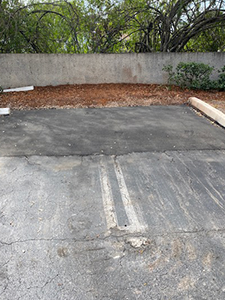

Root damage should be addressed carefully, regardless of whether it is the result of construction damage, garden excavation, or wintertime salt damage. If not well cared for, it may have a detrimental effect on the health of your trees.
While most trees will survive damage to their roots, extra care will be needed to help save the tree if damage is extensive. When your tree’s roots experience damage, consult a tree care specialist at Strickly Stump Removal for the next steps.
Damage to a tree’s roots can interfere with important system operations. Because of this, it may display a range of visual indicators that suggest a problem. Your tree’s roots may be damaged in the following ways:
The amount of the root system damaged and the depth of the excavation both affect the likelihood of root recovery. There are frequently no obvious signs in neighboring plants after excavating a yard to create a patio, driveway, or other structure. The decline of trees and shrubs can be attributed to other stress factors, such as drought and compaction of the soil, and the symptoms may not show up for several years.
If the damage does not take up more than one-fourth of the entire root zone, many plants can withstand and even recover from root damage.
Avoid the temptation just to chop down a valuable tree and call it a day if it seems like a borderline case. It might be good to take a step back and consider it more. Recall that you have time on your side. After breaking off any branches with care, allow the tree some time to heal. Later on, a final choice can be made. Consulting a certified arborist is always a good idea.
Hire an arborist if a certain tree is causing a lot of your root issues or if you’re not sure what to do. They will be qualified to offer advice on the best course of action. Removing the tree might be the only option in certain circumstances; however, this should only be done as a last resort because shade trees can be a valuable amenity.
An arborist can help you with species-specific solutions to root growth that will help protect both the tree and the structures around them. They will make sure not to trim or remove more roots than the tree can withstand. A certified arborist also knows whether a damaged tree is likely to survive or be a potential danger to people or structures around it.
A: Stump grinding involves the complete removal of a tree stump using a specialized machine called a stump grinder. This powerful equipment utilizes a rotating cutting blade to effectively reduce the stump into small wood chips.
Stump removal services in South Florida & Palm Beach County, Royal Palm Beach, Boynton Beach, Lake Worth, Palm Beach Gardens, Lantana, Wellington, West Palm Beach, Boca Raton, Delray and Greenacres providing top-notch stump removal solutions to our customers in these areas.